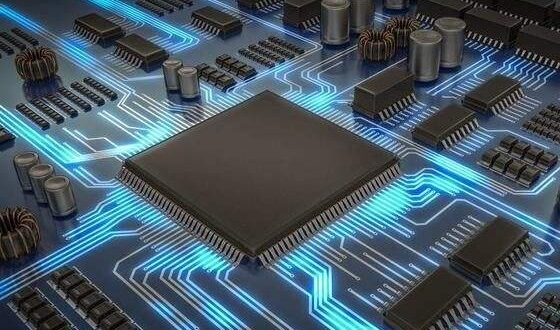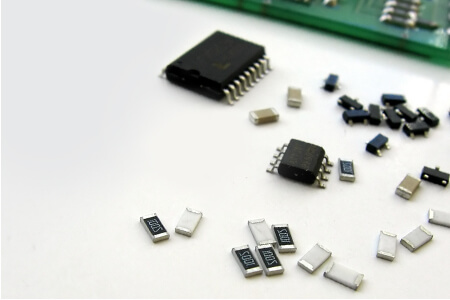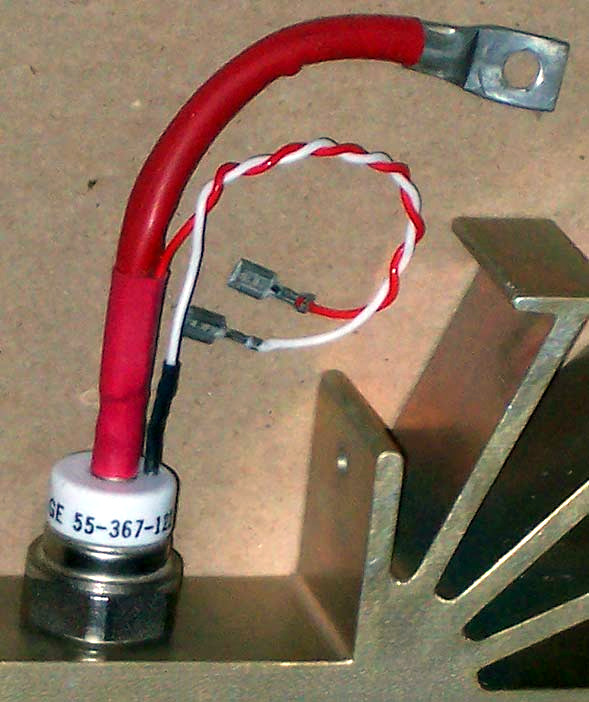Integrated Circuit
Integrated circuits are small electronic components or products. Electronic components have made significant progress toward downsizing, low power consumption, and intelligence by becoming a microstructure with essential circuit operations; all components are integrated. The circuit's necessary transistors, resistors, capacitors, inductors, and other parts are constructed on one or more miniature semiconductor chips or dielectric substrates, coupled to one another using a specific method, and then packaged in a package.
It is denoted by the letter "IC" in the circuit. Integrated circuits based on silicon (Si) and germanium (Ge) were developed by Jack Kilby and Robert Noyth, respectively. Today, silicon-based integrated circuits are used in the majority of semiconductor industry applications.
In the late 1950s and early 1960s, an entirely new class of semiconductor device known as an integrated circuit was developed. On a tiny chip, it assembles the capacitors, resistors, semiconductors, and other parts required to build a circuit with a particular function, along with the wires that connect them, and then solders the electronics in the package. Its packing shells are available in many different designs, such as round, flat, and double row. Integrated circuits are made up of both chip manufacturing technology and design technology, which are primarily represented by processing tools, packaging and testing technology, mass production technology, and design innovation capabilities.
Chip
Other names for chip include microcircuit, microchip, and integrated circuit. An integrated circuit chip made of microscopic silicon that is frequently used in computers and other electrical devices.
Chip is a general name for semiconductor components and goods. It serves as a carrier for wafer-sized integrated circuits (ICs). Chips made of silicon, which are incredibly small silicon components, contain integrated circuits. It's in a computer or some other electrical gadget.
Different Effects
The chip can accommodate more circuitry. Moore's Law states that an integrated circuit's transistor count doubles every 1.5 years, increasing capacity per unit area, decreasing cost, and enhancing usefulness.
All components are combined into one unit during the development of integrated circuits, which significantly encourages the downsizing, low power consumption, intelligence, and high reliability of electronic components. On a pea-sized piece of material, ICs can house hundreds of thousands of discrete transistors. It would be excessively expensive and bulky to use that many vacuum tubes. Technology of the information age was made possible by the creation of integrated circuits.
ICs are employed in many different industries nowadays, including cars, toasters, and rides at amusement parks. Integral circuits, which changed entire industries, are used in almost all electronic goods. Modern computer processors and microcontrollers are the small, low-cost integrated circuits (ICs) that make computers, smartphones, and other digital home appliances indispensable in modern society.
Different Shapes and Packages
A technique for miniaturizing circuits is the production of chips, which are frequently made on the surface of semiconductor wafers. Most chip makers utilize the Dual In-line Package, or DIP, as their most common standard. This calls for a rectangular package with leads separated by rows that are 0.1 inches and 2.54 mm apart. As a result, a conventional "grid" of 0.1"x0.1" pitch can be used to build multiple chips on the board and keep them perfectly aligned. Although the DIP standard hasn't changed, certain larger DIP packages were able to support higher numbers of up to 40 pins with the arrival of MSI and LSI processors (including a few early CPUs).
Integrated circuits are small electronic gadgets or parts. In order to facilitate handling, assembly onto printed circuit boards, and protection against damage to the device, the integrated circuits are housed in protective packaging. There are numerous varieties of packages.
Specific package types have established dimensions and tolerances and are registered with commercial organizations like JEDEC and ProElectron. Other categories have exclusive names and can only be made by a single or a few of producers. IC packaging is the last stage before the finished product is tested and sent to customers.
Sometimes it is feasible to affix a specifically made integrated circuit die to a substrate directly, without the use of carriers or intermediate connections. Solder bumps are used in flip-chip systems to link the IC to the substrate. For external connections to the circuit, the metallized pads used for wire-bond connections in conventional chips are thicker and extended in beam-wire technology. By employing additional packaging or epoxy filling in assemblies made with "bare" chips, the device is shielded from moisture.
The contact terminals (pins) of the circuit protrude from the body of the integrated circuit (IC), which is housed in a robust housing made of insulating material that conducts heat well. Depending on the pin configuration, different IC package types are available. Dual Inline Package (DIP), Plastic Quad Flat Pack (PQFP), and Flip Chip Ball Grid Array (FCBGA) are examples of package types.
Different Materials
Integrated circuits, which are constructed on one or more tiny semiconductor wafers or dielectric substrates and then packaged in tubes, connect transistors, resistors, capacitors, and other electronic components in specified ways. A single-crystal silicon wafer (or a III-V material like gallium arsenide) is utilized as the base layer during chip manufacture. MOSFETs or BJTs and other components are then created using photolithography, doping, CMP, and other techniques, and thin-film and CMP techniques are then utilized to construct the wires to finish the chip.
Above is a brief explanation of the distinction between a chip and an integrated circuit. An integrated circuit is frequently referred to as a chip since the surface IC packaging resembles a chip. Instead of an IC group, a group of integrated circuits is frequently referred to as a chipset. Nearly all contemporary electronic devices employ integrated circuits, or ICs. Thanks to advancements in semiconductor technology and manufacturing methods, integrated circuits were created.
Vacuum tubes were utilized in all computer hardware up until the advent of integrated circuits (ICs), to build logic gates and switches. Vacuum tubes are fundamentally really massive, powerful machines. As with any electrical circuit, discrete circuit components require manual connections. These outcomes have led to rather expensive and cumbersome devices for even the most fundamental computing tasks. When the personal computer first came out five years ago, computers were large and expensive.








